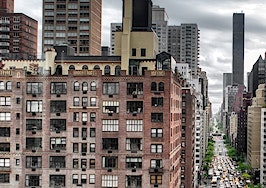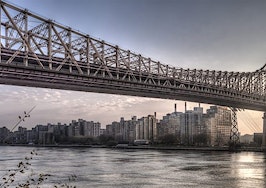- Overall, average rents throughout Queens went up .45 percent, from $2,141 in February to $2,151 in March.
- Much like other NYC boroughs, Queens inventory jumped by 7.26 percent month-over-month, from 1,226 units to 1,315 units on the market.
- Some of this expansion includes Rego Park and Ridgewood, which are largely affected by Long Island City and Bushwick (Brooklyn), respectively.
- Rego Park (7.56 percent), Jackson Heights (6.93 percent), Flushing (5.41 percent) and Ridgewood (4.05 percent) showed the most robust annual growth in March.
As Queens sticks out in New York City as a more affordable alternative to Manhattan and Brooklyn, certain submarkets are responding to demand with new development and, subsequently, increasing rent prices.
The latest MNS report for Queens shows rent price surges of 5.7 percent among studios — the largest shifts in all apartment categories. Overall, average rents throughout Queens went up .45 percent, from $2,141 in February to $2,151 in March.
Much like other NYC boroughs, Queens inventory jumped by 7.26 percent month-over-month, from 1,226 units to 1,315 units on the market.
Annually, rents in Queens have increased by 3.26 percent, from a previous $2,083 in March 2015.
[Tweet “Annually, rents in Queens have increased by 3.26 percent”]
While Astoria and Long Island City held the monthly tradition of holding the majority of inventory — 72 percent in March — other neighborhoods are showing impressive growth.
[graphiq id=”b9GoCwFQsSN” title=”Long Island City Queens, NY Profile” width=”600″ height=”591″ url=”https://w.graphiq.com/w/b9GoCwFQsSN” link=”http://places.findthehome.com/l/166508/Long-Island-City-Queens-NY” link_text=”Long Island City Queens, NY Profile | FindTheHome”]
“We’re seeing established neighborhoods that have infrastructure in Queens. As Long Island City and Astoria grow, the demand keeps pushing out,” MNS CEO Andrew Barrocas said. “In any core successful area, the boundaries expand, and the area matures.”
Some of this expansion includes Rego Park and Ridgewood, which are largely affected by Long Island City and Bushwick (Brooklyn), respectively.
Barrocas added that each neighborhood benefits from the next. Since more millennials are selecting Queens for financial purposes and as an alternative to the suburbs, retail spaces, restaurants and residential development continue to flourish.
Studios in Queens
Rego Park studios increased 7.52 percent, or $122, since February — the largest change in studio pricing throughout all neighborhoods in Queens. However, the sample size was less than 22 units when data was collected, which can impact trends.
Rego Park studios came in at an average price of $1,746 per month in March. The most expensive studios in March were in Long Island City at an average $2,436 per month. The average price for Queens studios last month was $1,772 per month.
One-bedrooms increase in Flushing
Flushing, the least expensive neighborhood in Queens last month for studios and one-bedrooms, increased 8.52 percent month-over-month. With a $137 bump, Flushing one-bedrooms cost $1,745 per month in March.
The most expensive one-bedrooms were in Long Island City at $2,821, followed by Astoria at $2,163. The average price for Queens one-bedrooms was $2,068.
Where are two-beds cheapest in Queens?
Despite a 4.64 percent monthly drop ($107), Jackson Heights two-bedrooms did not come in last at $2,215 per month. Ridgewood was the least expensive neighborhood for two-bedrooms in Queens last month at an average $2,111 per month.
The average price for Queens two-bedrooms was $2,581 in March. The most expensive two-bedroom units, unsurprisingly, fell in Long Island City at $3,697 per month.
Strongest annual growth
Rego Park (7.56 percent), Jackson Heights (6.93 percent), Flushing (5.41 percent) and Ridgewood (4.05 percent) showed the most robust annual growth in March.
Comparatively, Long Island City dropped by 3.23 percent from an annual price perspective. Astoria grew 3.75 percent in average rent and Forest Hills showed a 2.58 percent rise.




